

Note: UV light can seriously harm your eyes.
Some time after reading "A Powerful New Light Source for Ultraviolet Detection of Scorpions in the Field" I decided to build my own scorpion detection device using a bunch of UV LEDs instead of buying an UV flashlight. I ordered fifty 5mm UV LEDs (light emitting diodes) at the website of LSDiodes.
Since at the time of writing I have found 4 scorpions on my roof, I decided that I could simplify the design of the scorpion detector by using an universal adapter with an extension cable instead of batteries for power. I have plans to make a portable UV scorpion detector later on.
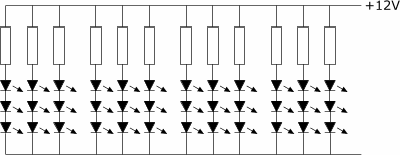
The maximum voltage of the adapter I bought is 12V, so with a typical forward voltage of 3.6 V, three LEDs can be connected in series. In order to limit the current to 20 mA, a series resistor of 56 Ohm (5%) was chosen, which is close to (12 - 3 x 3.6 V ) / 20 mA = 60 Ohm. It's more common to select the next higher value (68 Ohm in this case), but since the worst case current, 1.2 V / ( 56 Ohm - 5% x 56 Ohm ) = 23 mA, is well within range, I decided to use 56 Ohm.
Important note: do check the actual output of the adapter you are going to use under load. On the one I use the switch position says 12V, but the actual output is over 15V. I managed to kill quite some UV LEDs of my detector before I rememebered to check the actual voltage.
I bought a small predrilled circuit board with some copper traces. I had to cut some traces and make new connections using parts of the cut off legs of the LEDs. I grouped the LEDs in 4 x 3 rectangles.
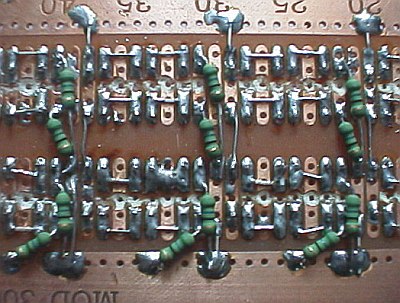
I soldered the resistors on the underside of the circuit board. I soldered first one group of 12 UV LEDs, and tested each row after I made the final connection of the row.

When I tested each row of 3 LEDs I made sure that I covered the LEDs first with a piece of thick paper since I didn't want to damage my eyes. After finishing the first group, I used the same way of soldering and testing on the 3 other groups. The final result has 48 UV LEDs.
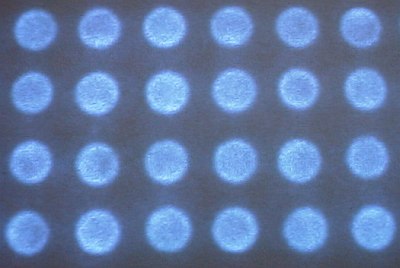
With the finished ultraviolet scorpion detector I was able to make a living scorpion glow from a distance circa 5m (ca. 16 feet). Note that the UV LEDs get quite hot when burning, and the article I read recommends to use a fan to cool the UV LEDs.
I used a cheap webcam (around 16 USD) in combination with VirtualDub to make a few movies. Irfanview was used to create snap shots.
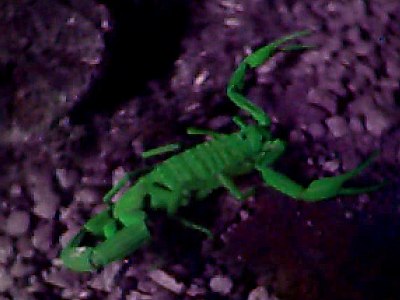
The actual glow color is more yellow / green. The effect can be best described as if the scorpion has been covered with glowing dust.
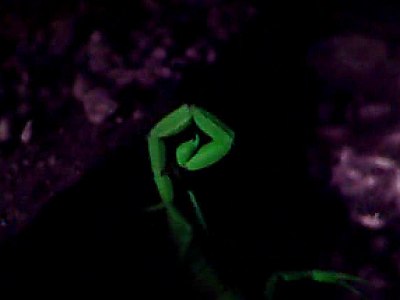
I have no idea how much damage the "black light" can do to a scorpion. As far as I can tell they notice the ultraviolet light and try to run away from it. When I use a normal flashlight they seem less annoyed.